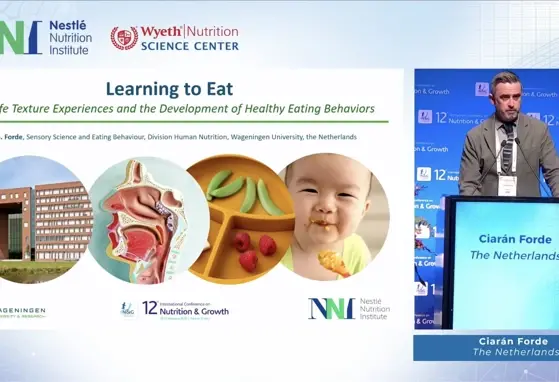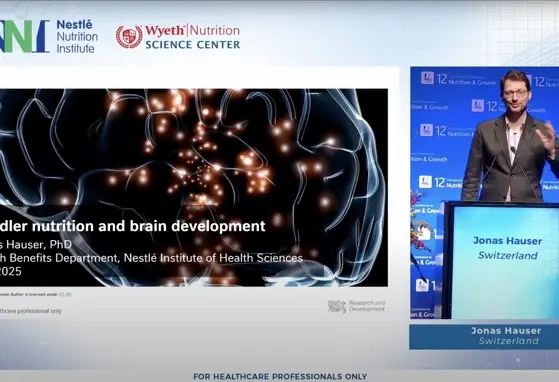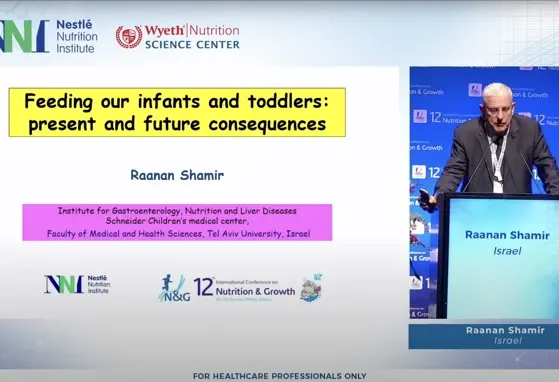Nestlé FITS data: Iron deficiency rises to dangerous levels revealing need for innovation
A sharp and steady decline over the past 18 years of infant iron consumption uncovered by Nestlé’s long-term Feeding Infants and Toddlers Study reveals a threat to children’s brain development and learning capabilities as well as a significan opportunity for innovative iron-fortified baby food and supplements.
“More infants than ever are not getting enough iron in the US today,” Erin Quann, head of medical affairs at Nestlé Nutrition/Gerber, told attendees yesterday during the fifth installment of FoodNavigator-USA’s virtual Food For Kids Summit, Meeting Children’s Nutritional Needs, from Foods to Supplements.
Pointing to data in Nestle’s FITS study, which surveyed a cross-section of roughly 3,200 US children’s caregivers in 2002, 2008 and 2016, Quann noted about one in five 6- to 12-month-olds fell short of iron in 2016 – nearly double the amount in 2002.
The decline mirrors a drop in consumption of iron fortified infant cereal and iron-rich beef in baby food during the same period, Quann noted.
“Iron-fortified infant cereal has been the long-standing number one source of iron in children’s diets,” and historically was offered as a first food with 82% of 6- to 12-month-olds consuming it in 2002 according to FITS data, Quann said. But, she added, FITS data shows by 2008 consumption of iron-fortified cereal by this age group fell to 65% before dropping even lower in 2016 to 52%. Simultaneously, consumption of iron-rich beef by 6- to 12-month-olds fell from 5% in 2002 to 1% in 2008 before rebounding to 3% in 2016, FITS data revealed.
The drop-off in infant consumption of iron-rich and fortified complementary foods also tracks an increase in breastfeeding in the US, underscoring the need for iron rich foods and supplements for breastfed and mixed-fed infants, Quann said.
Pointing to FITS data, Quann explained that in 2016 just over eight in 10 infants who were exclusively breastfed between 6 and 8.9 months were deficient in iron, with only 32% of these consuming infant cereal and only 9% eating baby food meat.
Iron deficiency was much lower in babies who were partially breast fed during this period – about 25% -- or fed only formula – about 5%, according to FITS.
The data also shows during the first year of life, only 4% of breastfed babies received an iron supplement and only 3% of those who were mixed-fed received an iron supplement.
While not as low as iron supplementation, the percentage of children who received a vitamin D supplement during their first year, as recommended by health experts, was also far below ideal with 20% of breastfed babies taking a vitamin D supplement and 14% of mixed fed babies taking a vitamin D supplement.
Reflecting on these findings, Quann emphasized the opportunity for innovation and education for fortifying foods with iron or creating iron supplements for infants.
Overcoming challenges fortifying foods with iron
This may be easier said than done, though, said Eric Ciappio, a registered dietitian and the technical sales manager for IFF Health, which sponsored the webinar along with DSM.
“The challenge with iron fortification isn’t necessarily that it doesn’t work in certain foods – because in fact it does. You can formulate it. The problem is it causes some off-sensory notes. You get undesirable organoleptic changes,” he explained during the webinar.
In addition, he said, when fortifying with iron it must be a format that is highly bioavailable and absorbed equally to the gold standard product, ferrous sulfate.
To address both of these challenges, IFF Health created AB Fortis, which as an encapsulated ferric saccharate meets the World Health Organization’s bioavailability recommendations without interacting with the food matrix, Ciappio said.
“We have tested it in our own lab … in a variety of different applications from milk and dairy to meat and savory products, bakery, drinks – you name it, really,” he said, adding AB-Fortis is “a really fantastic product” and solution to the severity and prevalence of iron deficiency among children.
Beyond fortification
Children’s food manufacturers can also boost iron in their products through creative formulations that incorporate more red meat or iron-rich foods, Quann said.
This strategy has been wildly successful for Serenity Kids, which several years ago launched a line of high-fat, meat-focused baby food purees.
Ultimately though, Quann said, there is no one solution to shoring up iron deficiency. Rather, she says caregivers will need a combination of foods that are naturally rich in or fortified with iron and some may need supplements.
If you liked this post you may also like


Learning to Eat: Early life texture experience in the development of eating behaviors and dietary patterns


Feeding our infants and toddlers: present and future consequences